Obviously Better Stuff
The best climate solutions are just plain obvious.
We often talk about how climate solutions actually get put to work. How do we take exciting technologies out of the lab, and put them into homes and onto city streets?
We’ve learned about a lot of innovative ways to regulate, govern, finance, and incentivize climate solutions to reach this goal. But our favorite way comes from Sam D’Amico of Impulse Labs: build obviously better stuff.


What does it mean to build obviously better stuff?
Before we get into why this is our favorite way to ensure climate solutions are implemented, let’s all get on the same page about what makes something better. We’ve constructed a little rubric for you:
Performance: How warm is this blanket? How bright is this light?
Control: How precisely can I manage the temperature in my home with this thermostat? Or the temperature of my food with my stove?
Convenience: Things need to be easy. That is all.
Beauty + aesthetics: We like things that look cool. Who doesn’t?!
Optionality: Does this product add new and better options, rather than eliminate existing ones?
Cost / cost effectiveness: Duh
Reliability and Resilience: Will this battery die when I need it most? Will my car break down on the side of the road? Will my dryer catch fire and burn my house down?
Community: There is something so satisfying about the all-blue iPhone group chat.
Delight: All the intangible reasons that we love certain products. Our favorite example of this is pens that are extremely similar, but just feel different.
You’ll notice that climate-friendly or “green” isn’t listed on this rubric. And that’s because for today’s exercise, we’re going to evaluate climate technologies across two different axes: quality and “greenness”:
Alright, now that we’re all on the same page, let’s talk about why building obviously better stuff is an important climate tactic.
The history of better stuff
Historically, it’s easy to think of technology and progress as pretty harmful to the environment — which is fair, with gas-guzzling cars, polluting manufacturing plants, and forever chemicals in our homes. This trend was largely true until the first wave of “greentech” in the late 2000’s and the latest wave of climate tech. But let’s talk about how creating better products has (sometimes accidentally) led to the widespread adoption of greener options.
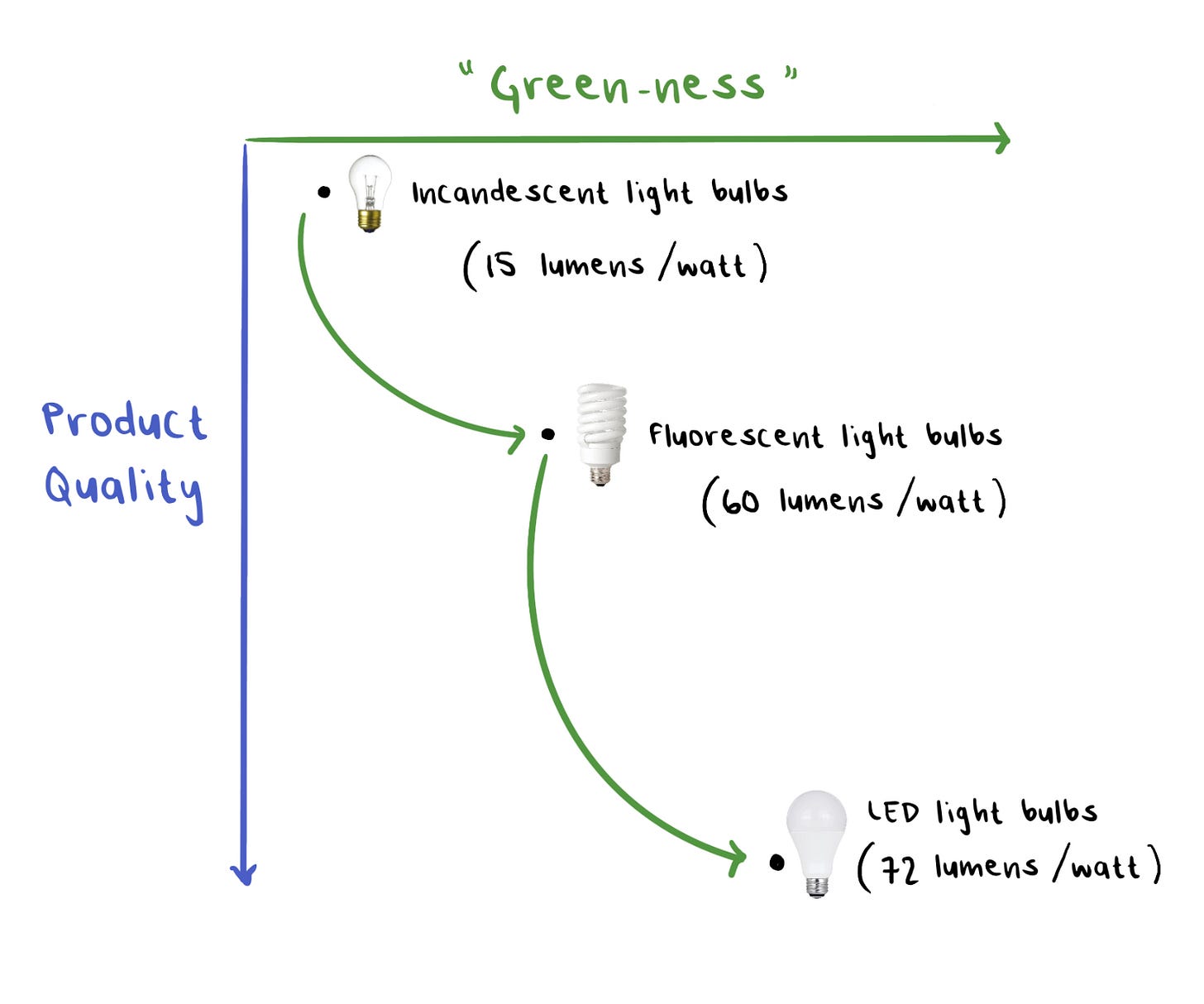
LED light bulbs aren’t just more energy efficient. From lifespan to brightness to long-term cost savings, they’re the obvious choice. We sourced these efficiency data from HomElectrical.
We started with the incandescent light bulb, then moved to fluorescents in 1934, and now the standard is LEDs.
Part of the transition to each “generation” of the lightbulb was driven by a purely human interest in efficiency. But this didn’t necessarily mean that it was just about the environmental impacts. LEDs give you more control, offer more colors, reduce your electricity bills, and light your room without making it feel five degrees warmer. Those things all make LEDs better products, which is part of why their uptake is so universal. They didn’t turn into a culture war, and you see LEDs universally in homes and offices — whether they’re liberal or conservative.
Why is it so important to take the “better stuff” approach?
There are two reasons that it’s important to make “obviously better stuff” rather than slight incremental improvements, or green-washed average products.
Excitement > culture wars. When we encourage people to buy climate-friendly products because of their quality, we generate excitement, with the added benefit of climate impacts! When we try to guilt and shame people into buying climate-friendly products that are equivalent or worse to the status-quo, we get culture wars. (See the great gas stove debate of January 2023).
Just selling “green” products doesn’t get the job done. We’ve seen a lot of products that are marketed exclusively as “climate-friendly” or “environmentally-friendly” alternatives to current products. The only way they set themselves apart from existing options is by claiming to be better for the planet — regardless of quality.
This approach suffers from the fact that save for highly motivated buyers, most people still decide what to buy based on the quality and cost of a product. As John Doerr said — “People will not pay a premium for an equivalent green product.”
This approach may also have an unexpected downside: eroding people’s trust in climate products. Here’s an example where we got this really wrong (it speaks for itself):
Achieving scale! Better stuff — like LED light bulbs — allow climate technologies to transcend small market segments. Rather than having to appeal to a small, highly motivated climate-tech buyer, this approach allows products to achieve more widespread adoption. This leads to economies of scale, supportive products and services, and even upstream shifts in the supply chain. All of these make it even easier to achieve more scale — leading to a virtuous cycle!
Tesla is a perfect example of a company that has achieved this scale. When they first began operating, EV battery supply chains and charging networks were nascent (if at all existent). But the popularity of Tesla’s vehicles is an undeniable driver in the massive embrace of electric vehicles, which has fundamentally changed the economy. We’ve seen all sorts of start-ups and companies pop up to source the metals we need for EV batteries. Even more are sprouting to offer supportive products like robust EV charging networks. Seemingly unlikely players — like home electricians — are playing critical roles by providing supportive services. Now, anyone who wants to buy a Tesla (or any EV, for that matter) can make the switch more easily, because the initial growing pains of EV adoption have largely been smoothed over.
How do we put this information to work?
There are a lot of companies that already create obviously better stuff! They’re really cool, and even more importantly they create meaningful climate mitigation and resilience co-benefits. Here are four of our favorites:
🥘 Impulse Labs
Obviously better thing: Creating the next generation of home appliances, starting with stoves.
What it’s better than: Gas stoves, which pollute the air in our homes. Also most electric stoves, which are notoriously unpopular among the cooks who use them.
How it works: Impulse is changing the game of electric stoves by adding a battery to the mix. This means that the stove can slowly draw power from your home’s power over time, but then release it very quickly.
Why it’s obviously better:
Performance: We watched an Impulse stovetop boil about a liter of water in 30 seconds!
Control: You can control the temperature of your food to the degree. That level of precision isn’t anywhere near possible with a gas stove.
Aesthetics: Just look at the thing!
Climate benefits:
Resilience and reliability: the battery on an Impulse stove means that even if the power goes out, you’ll still be able to cook.
Mitigation: Impulse stoves can act like batteries, which makes it possible for them to play a role in the deployment of climate solutions like virtual power plants!

💨 Electric Air
Obviously better thing: Heat pumps that work with your home.
What it’s better than: Forced-air heaters, which burn natural gas. This not only means high costs and reliance on gas in the home, but also exposes your family to risks like carbon monoxide poisoning if something goes wrong with the ventilation system.
How it works: Electric Air is leveling up heat pumps by creating a unit that replaces your forced-air furnace. That means if your home has ducts, this heat pump behaves like a central heater, air conditioner, and even air purifier!
Why it’s obviously better:
Control: You have use of a mobile app and smart thermostat to beautifully control the temperature of your home!
Savings: Depending on the type of heater you currently have, you could save up to 50% on your heating bills.
Aesthetics: It’s simple, beautiful, and fits right into your home decor!
All-in-one system: Unlike most heaters, the Electric Air unit also cools your air, cleans it, and even controls its humidity! It’s four different appliances in one to make sure you’re comfortable and happy in your home.
Climate benefits:
Mitigation: Electric Air’s optimized energy use function connects to the grid to use abundant, low-cost, renewable energy!
Resilience: Extreme heat, wildfire, and humidity and mold come to mind when it comes to the temperature and quality of your home’s air. All of these can be serious threats to your family’s health, and a system like Electric Air can provide protection and resilience.

🗑 Mill
Obviously better thing: A waste bin, except it turns your kitchen trash into usable products.
What it’s better than: Traditional trash cans and at-home compost bins, which are gross and stinky. (They can also be breeding grounds for mold, and attract bugs or rodents.)
How it works: Mill dries out and grinds up your kitchen scraps, turning it into chicken feed or compost. Though we are admittedly skeptical of Mill’s subscription payment model (we are reminded of Doerr’s quote above), we think the technology itself is cool!
Why it’s obviously better:
Aesthetics: Unlike trash cans, these are neither gross nor stinky!
Convenience: Mill can significantly shrink down your food scraps, meaning that trash takes up less space in your kitchen.
Delight: We don’t know about you, but we think there is something delightful about watching your trash transform into something useful in just a few hours. If we were kids, this would either seem like an amazing science experiment or a magic trick!
Climate benefits:
Mitigation: Reducing food waste is the #1 ranked solution by Project Drawdown in a scenario where we see temperature increases of 2 degrees Celsius by 2100. In the US alone, food waste accounts for 170 million metric tons of CO2e annually (carbon dioxide equivalent) — that’s the same as 42 coal-fired power plants! By preventing food from going to the landfill, and instead using it for food production, this technology takes a step in the right direction.
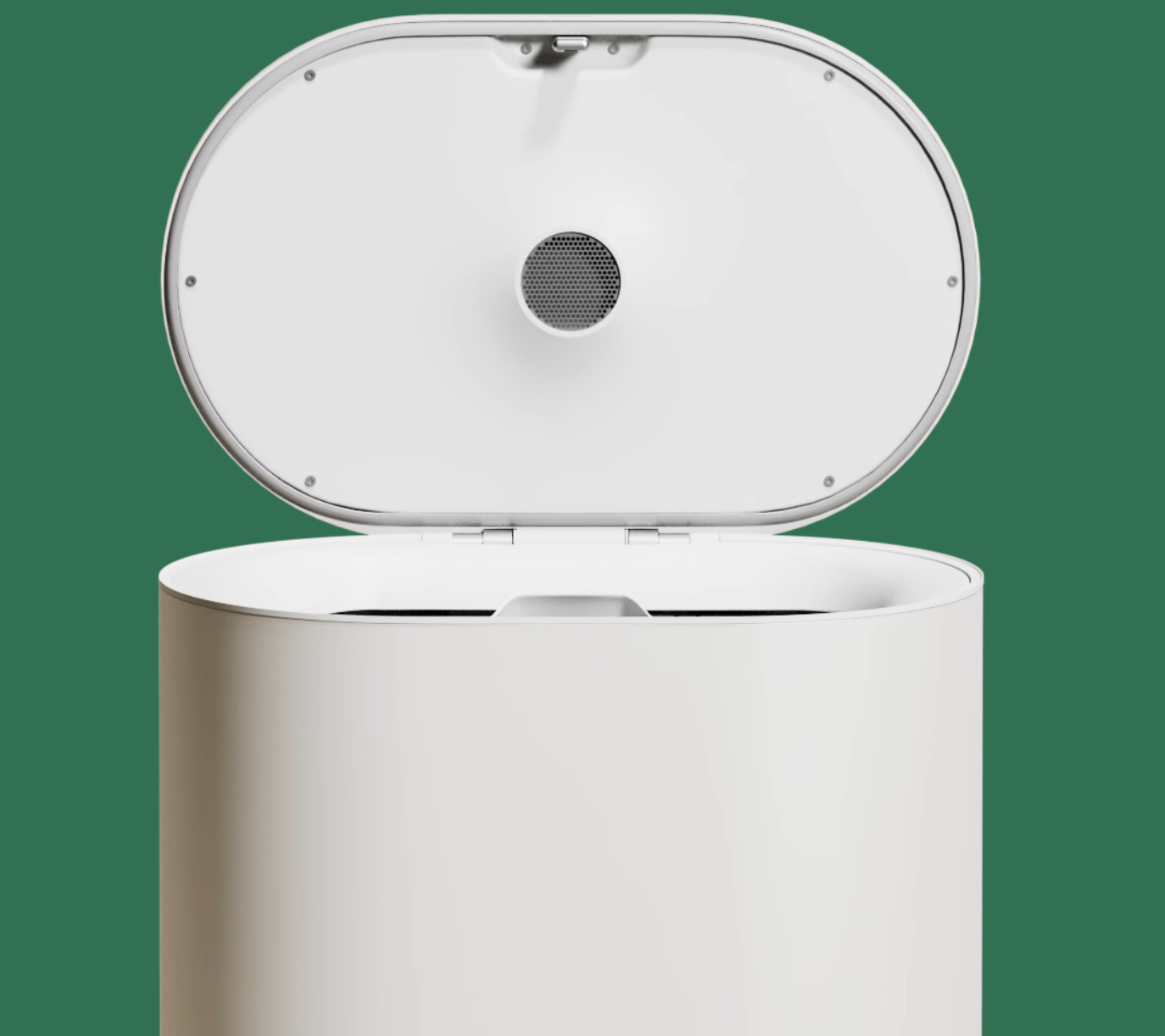
⚡️ Tesla Power Wall
Obviously better thing: A battery for your home.
What it’s better than: Back-up generators, which raise concerns of carbon monoxide poisoning and may need to be refueled (they burn diesel or natural gas, after all).
How it works: The Tesla Power Wall, and similar back-up batteries, allow you to store excess energy that you generate with rooftop solar panels. These allow you to save up the power you store during the day for night-time use. More importantly, they serve as a source of back-up energy if the power goes out.
Why it’s obviously better:
Aesthetics: Tesla Power Walls are sleek and compact. Generators are not.
Convenience: Power Walls can be installed more quickly than generators, and often require less infrastructure (like a gas line or concrete pad).
Reliability and safety: There’s no concern of running out of fuel or getting carbon monoxide poisoning from a Power Wall!
Climate benefits:
Mitigation: Tesla Power Walls can be powered with rooftop solar, whereas generators require natural gas or diesel for fuel. We’d rather use the one that doesn’t create carbon emissions!
Resilience: Power Walls (and any back-up power system in general) can give you peace of mind at home. If the grid goes down during a heat wave or hurricane, you can be sure that your home will keep its lights on.

Tons of other companies are taking this approach, and we’re excited to continue sharing these developments with you! While there’s no silver bullet to mitigating or adapting to climate change, we think that building obviously better stuff is an important tactic for every solution we propose.



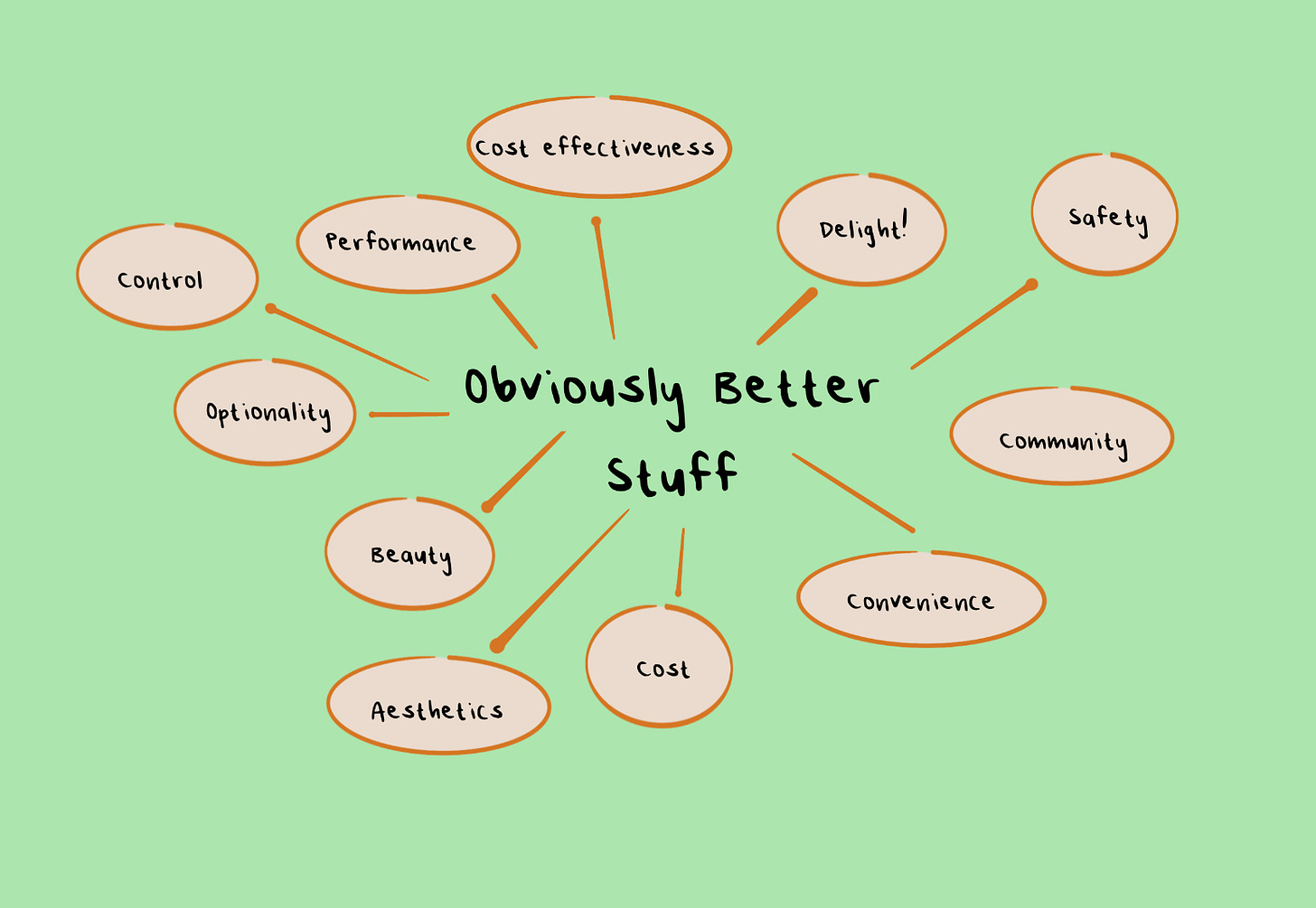
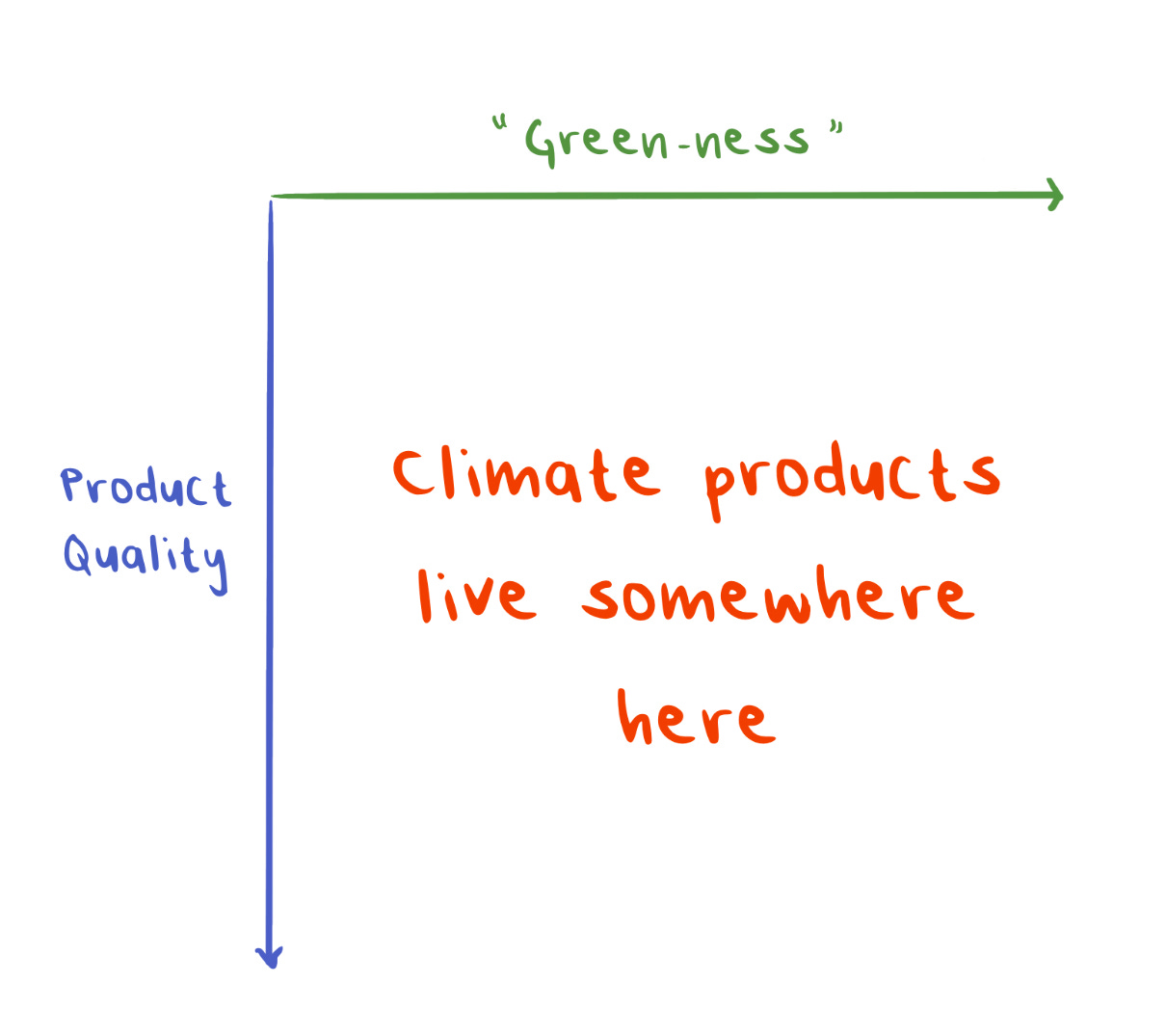

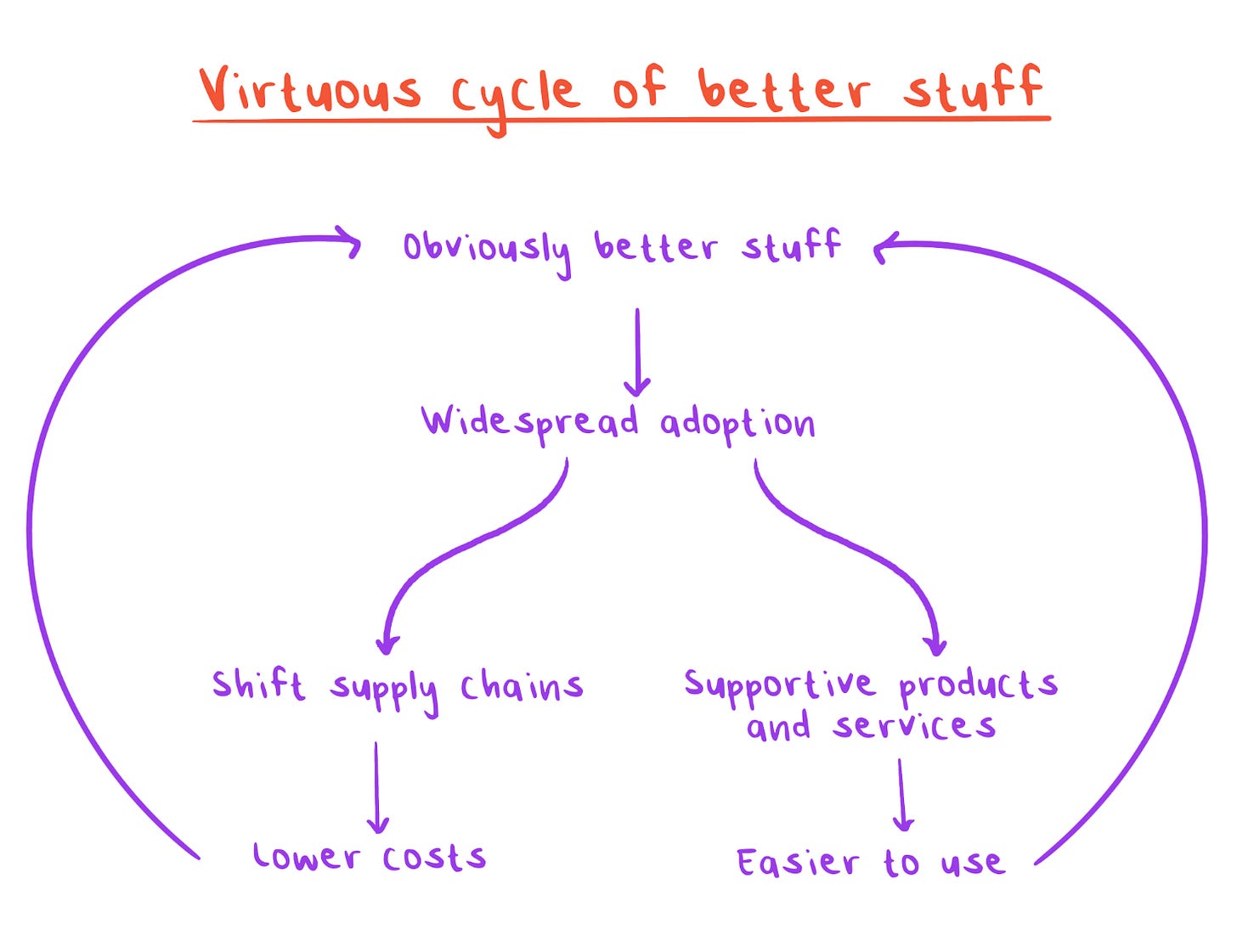

Great article, thanks!
One point I'm a bit dubious on is the idea that Mill is a good solution for the food waste problem that Project Drawdown is talking about. It seems like they're looking at all of the carbon generated by producing uneaten food, and talking about the benefits of never producing that food in the first place. But mill doesn't prevent that food from never being produced in the first place -- in fact it may encourage food waste if it makes people feel less guilty about throwing away food in the first place. You could argue that mill reduces the amount of chicken feed that we need to produce, but by how much are we talking?
That's not to say that what we do with food after it "becomes" wasted isn't important, but to me the highest-leverage position to act seems to be preventing the production (one way or another) of that food in the first place.
Love the substack!
Wanted to add that my understanding is that Lomi is straight-forwardly a scam: https://www.youtube.com/watch?v=d8M9E_XC3So
I'm not sure about Mill, but it's probably worth doing some napkin math on their product, just in case. Cheers, hope you keep it up for a long time! :)